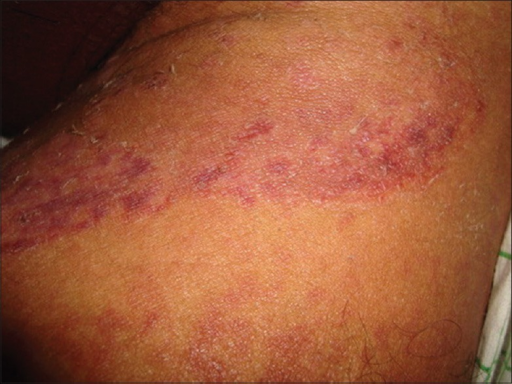
- Adult tcel lyphoma nodule skin#
- Adult tcel lyphoma nodule Activator#
- Adult tcel lyphoma nodule plus#
Diagnosis ĭiagnosis is made based on the combination of clinical features, characteristic morphologic and immunophenotypic changes of malignant cells. Transmission of HTLV-1 is believed to occur from mother to child by sexual contact and through exposure to contaminated blood, either through blood transfusion or sharing of contaminated needles. Infection with HTLV-1, like infection with other retroviruses, probably occurs for life and can be inferred when antibody against HTLV-1 is detected in the serum. Most patients die within one year of diagnosis. Immunodeficient mice that received implants with leukemic cells from patients with ATL or with HTLV-1–infected lymphocytes developed hypercalcemia and elevated serum levels of PTHrP.
Adult tcel lyphoma nodule Activator#
In patients with ATL, elevated serum levels of IL-1, TGFβ, PTHrP, macrophage inflammatory protein (MIP-1α), and receptor activator of nuclear factor-κB ligand (RANKL) have been associated with hypercalcemia. One of the striking features of ATL and multiple myeloma induced bone disease is that the bone lesions are predominantly osteolytic with little associated osteoblastic activity. However, patients with HTLV-1–induced ATL and multiple myeloma are predisposed to the development of tumor-induced osteolysis and hypercalcemia. Bone invasion and osteolysis, features of bone metastases, commonly occur in the setting of advanced solid tumors, such as breast, prostate, and lung cancers, but are less common in hematologic malignancies.
Adult tcel lyphoma nodule skin#
ATL is frequently accompanied by visceral involvement, hypercalcemia, skin lesions, and lytic bone lesions. This evidence includes the frequent isolation of HTLV-1 from patients with this disease and the detection of HTLV-1 proviral genome in ATL leukemic cells. Several lines of evidence suggest that HTLV-1 causes ATL. Circulating lymphocytes with an irregular nuclear contour (leukemic cells) are frequently seen. ĪTL is usually a highly aggressive non-Hodgkin's lymphoma with no characteristic histologic appearance except for a diffuse pattern and a mature T-cell phenotype.
Adult tcel lyphoma nodule plus#
Beyond clinical trials, treatments are centered on multiagent chemotherapy, zidovudine plus interferon a (AZT/IFN), and allogenic hematopoietic stem cell transplantation (alloHSCT). All patients are referred to clinical trials if available. Some therapy modalities for treatment may not available in all countries therefore strategies differ across the world. Ĭurrent treatment regiments for ATL are based on clinical subtype and response to initial therapy. ATL normally occurs around the age of 62 years but median age at diagnosis does depend on prevalence of the HTLV-1 infection in the geographic location. However, cases have increased in non-endemic regions with highest incidence of HTLV-1 in southern/northern islands of Japan, Caribbean, Central and South America, intertropical Africa, Romania, northern Iran. Globally, the retrovirus HTLV-1 is estimated to infect 20 million people with the incidence of ATL approximately 0.05 per 100,000 with endemic regions such as regions of Japan, as high as 27 per 100,000. Acute and Lymphoma-type are known to particularity be aggressive with poorer prognosis. ATL is categorized into 4 subtypes: acute, smoldering, lymphoma-type, chronic.


A small amount of HTLV-1 individuals progress to develop ATL with a long latency period between infection and ATL development. All ATL cells contain integrated HTLV-1 provirus further supporting that causal role of the virus in the cause of the neoplasm. Medical condition Adult T-cell leukemia/lymphomaĪdult T-cell leukemia/lymphoma ( ATL or ATLL) is a rare cancer of the immune system's T-cells caused by human T cell leukemia/lymphotropic virus type 1 ( HTLV-1).


 0 kommentar(er)
0 kommentar(er)
